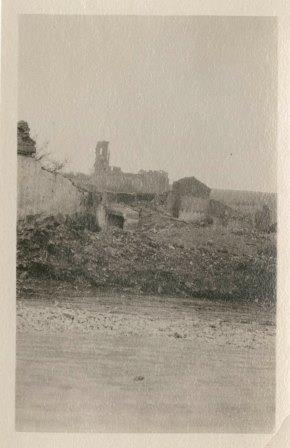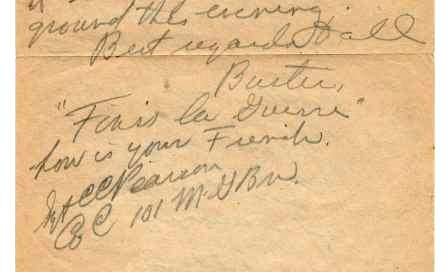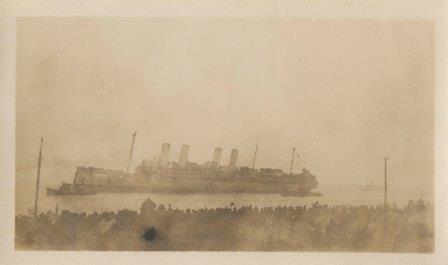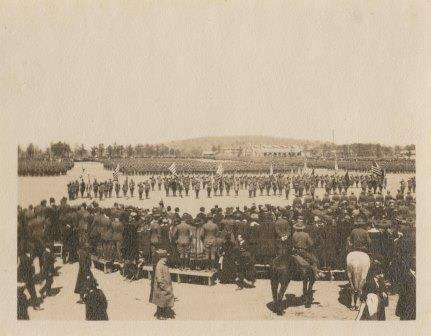By Mary Yacovone, Senior Cataloger
One of the Society’s “hidden gems” is finally getting its day in the sun with the processing of three collections of bookplates. Known since 15th-century Germany, bookplates, sometimes called Ex Libris, have a long and interesting history. Initially a tool to identify the owner of a book and to prevent theft (or ensure safe return), bookplates evolved from mere identification into tiny works of art and reflections of the owner’s personality and aspirations.
Perhaps the most common bookplates to be found in our collection are armorial bookplates, featuring family coats of arms and mottoes, which became prevalent in bookplate design from an early date. These armorial designs display both “pride of ancestry and love of the display of aristocratic claims.” Also quite common are simple labels with the owner’s name, sometimes enclosed in a border of engraving or type ornaments. But around the turn of the last century, bookplate designs became much more creative and personal with designers creating plates that reflected the interests of their clients—homes, pets, hobbies, portraits. In this period, many of the bookplates never made it into books, but instead were collected and traded among fellow enthusiasts. The collecting and trading of bookplates reached its peak between the 1880s and 1950s, and most of the plates in the Society’s collection date from this era.
The earliest bookplate found in the Massachusetts Historical Society is from 1685, a plate bearing the inscription “Gulielmus Payne Me suis addidit MDC,LXXXV, ” but I wanted to feature some of the quirkier examples of the art that caught my eye when I was cataloging these collections.

Edward N. Crane chose for his bookplate a play on his last name.

Reverend Carl E. Peterson chose this 1893 design by Bessie Pease Guttman, better known for her illustrations of children and babies than for cheeky devils reading witchcraft books.
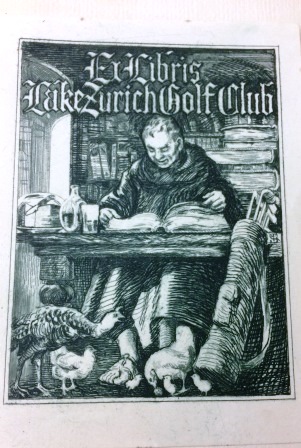
The Lake Zurich Golf Club in Lake Zurich, Illinois, identified its (presumably) golf-related tomes with the image of a studious monk with his libations and clubs at the ready.
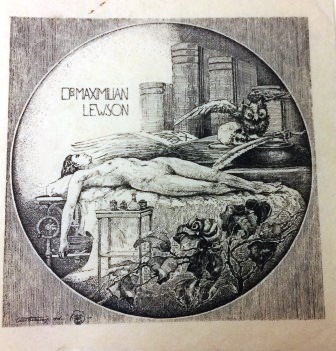
Dr. Maximilian Lewson of New York selected a somewhat dramatic scene by bookplate designer Curt Szekessy to represent his profession.
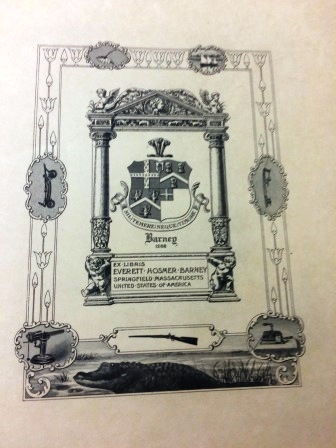
Last, but by no means least, Everett Hosmer Barney of Springfield, who made his fortune as a Civil War arms producer and inventor of clamp-on roller and ice skates, somehow managed to incorporate his genealogy, inventions, hobbies, and a grinning alligator onto one small bookplate.
The bookplates shown here are all from the Ruby V. Elliot bookplate collection (http://balthazaar.masshist.org/cgi-bin/Pwebrecon.cgi?DB=local&BBID=114606), but there are plenty to treasures to be found in the Society’s own collection (http://balthazaar.masshist.org/cgi-bin/Pwebrecon.cgi?DB=local&BBID=208382), as well as the collection of armorial bookplates amassed by Charles R. Crane (http://balthazaar.masshist.org/cgi-bin/Pwebrecon.cgi?DB=local&BBID=208307).


